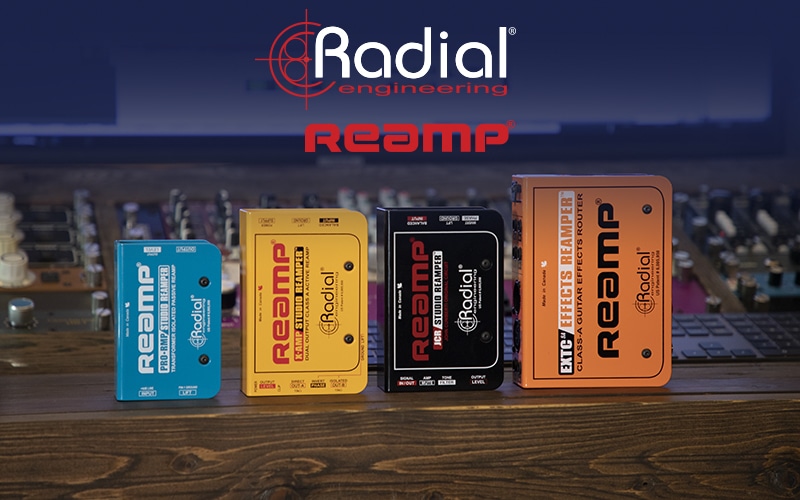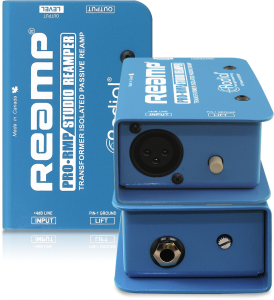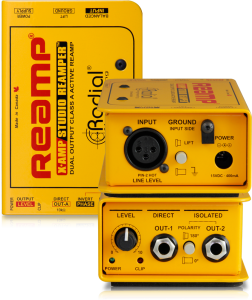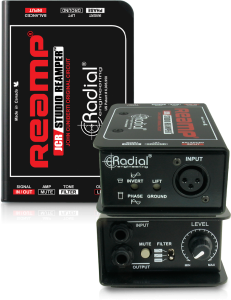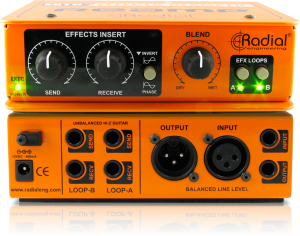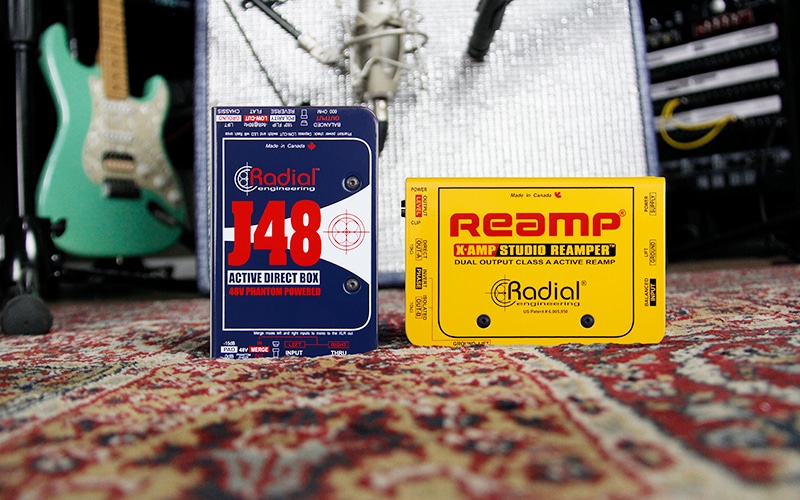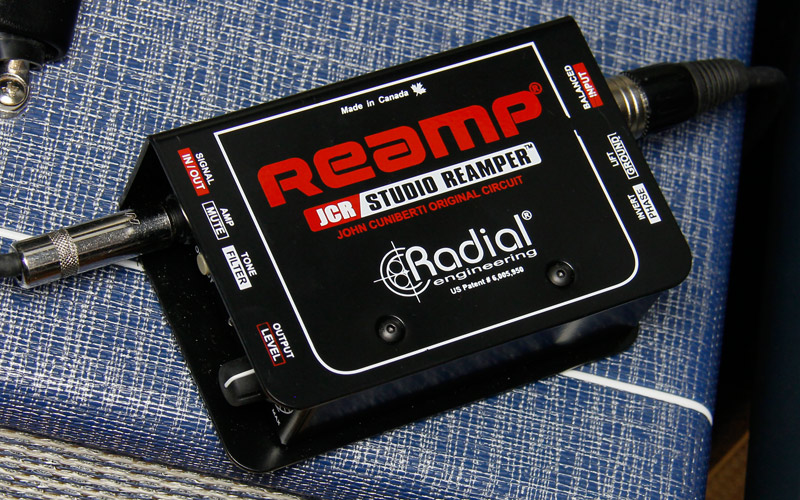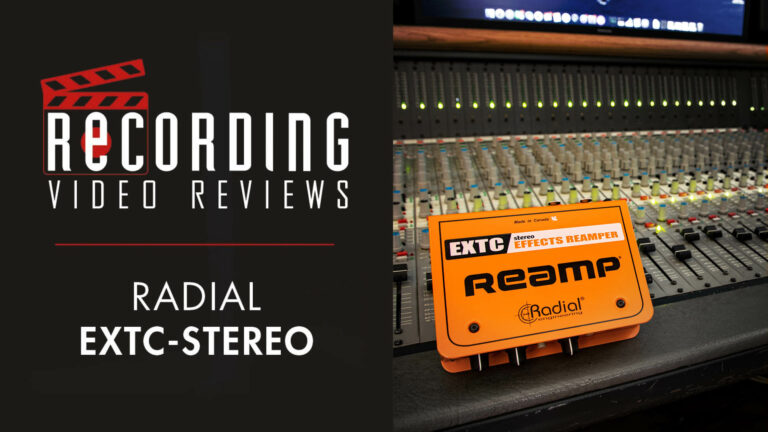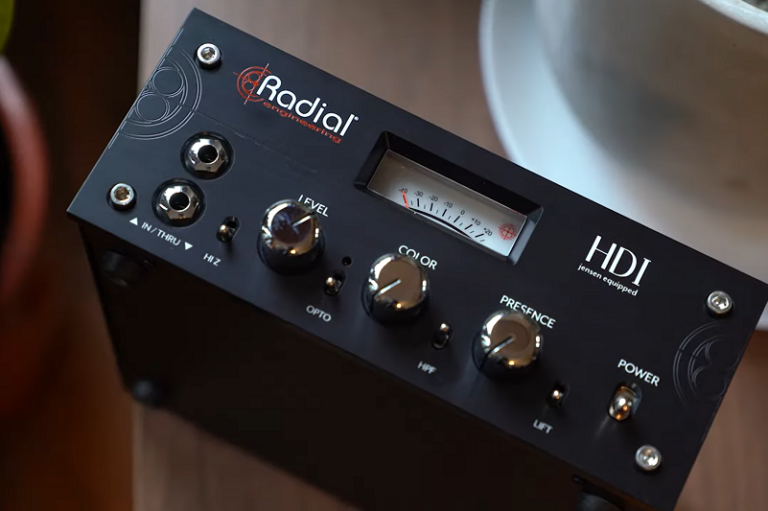Getting a good guitar tone is easy, settling on the perfect tone is impossible until you can hear it in the context of the mix. A popular adage with recording is “garbage in – garbage out”, implying that you’re doomed if you mess up the tracking process, but what if there’s a way around this?
The solution: Reamping. As the name implies, it’s where you take a pre-recorded track and “re-amplify” it back through a speaker to achieve a tone that properly suits the song. It sounds arduous and time-consuming, but bear with me here: this process could actually save you tons of time and revolutionize the sound of your music.
Radial Engineering offers four different tools for Reamping. Here we explore the differences between each option and which is best for you.
We used the J48 to record a clean, direct signal that was later used for Reamping.
1. Reamp ProRMP – Passive Reamper
The Radial ProRMP™ is a 100% passive Reamper™. This means if does not require any external powering.
2. Reamp X-Amp – Active Studio Reamper
The Radial X-Amp™ is a dual output class-A active Reamper™ that lets you take a pre-recorded track and send it through amps and pedals without noise.
3. Reamp JCR – John Cuniberti Original Circuit
The Reamp® JCR utilizes the original Reamp circuit designed by recording industry legend John Cuniberti, providing exceptional audio quality that preserves every detail of the original recording while optimizing it to feed amplifiers and effect pedals.
4. Reamp EXTC-SA
The EXTC-SA™ is a unique interface for connecting guitar pedals to the inputs and outputs of pro audio equipment such as recording interfaces or mixing consoles, allowing you to incorporate your pedals in new and creative ways.
Check out our SoundCloud playlist for audio comparison between the four Reamp options:

